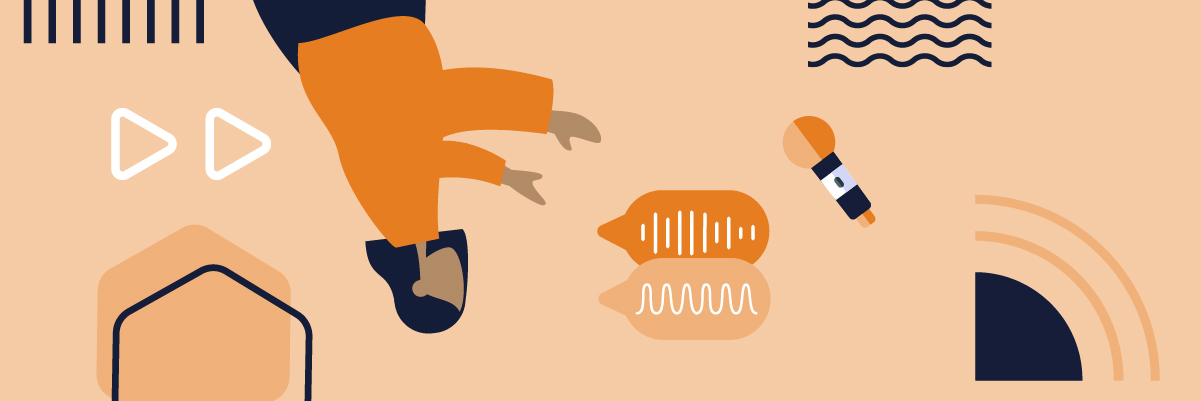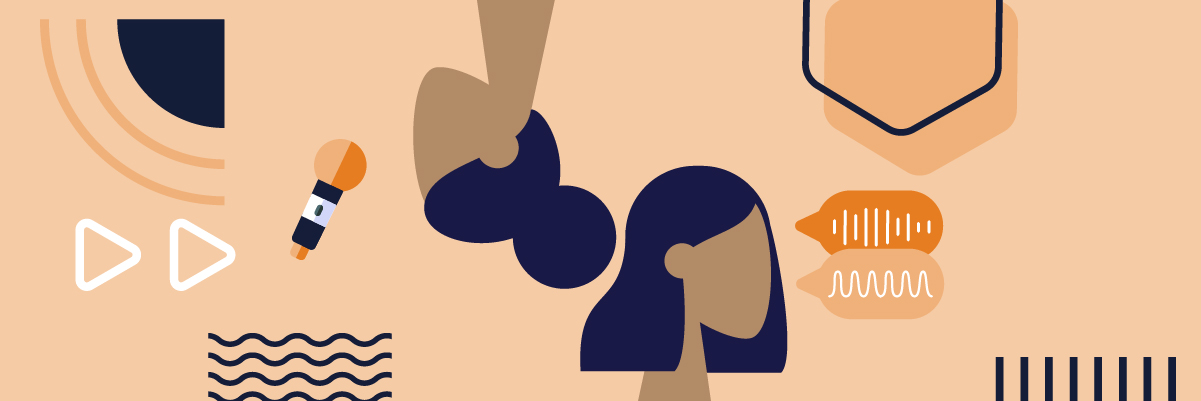We’ve talked at length about the great things anime has to offer the world here; great performances, adult, complex storytelling, and bangin’ music are just a few of its charms. And, while we’ve also been fond of dubbed anime in general, it still gets an unjust amount of flak, in our opinion. Today, we’re going to help rectify that view and give you a more complete overview of why it just works.
But wait, does this mean that dubbed anime is somehow inherently better than subbed anime? Is there no respect for the original, theatrical quality of the original Japanese voices? Not at all! We’ve given the Japanese “seiyuu” their much-owed love here and will continue to do so. But, in a globalized world where the needs of the many outweigh the needs of the few, things aren’t always so cut-and-dried.
To understand dubbed anime, we also need to understand how the minds of consumers work. Seeking familiarity is something inherently human, after all, and not a bad thing. But, there’s also much more to a good dub; when done right it can even augment the original version, make it more believable and immersive.
Your mileage may vary, of course, but today we’ll learn why the dubbing detractors aren’t always right. Let’s take a deeper look!
This post has been updated in September 2021.
Dubbed Anime and Voice Replacement
Voice replacement? “What’s that little bit of obscurity?” we hear you asking. Well, it’s what we typically know as “dubbing”. When you have a track in an original language but need it in a different one, a team of translators, voice artists, and sound engineers gets to work like an anthill of voice replacement.
Thus, voice dubbing means “switching” the performances from one language to another. If done well, it can provide a near-seamless experience where actors seem to be naturally speaking the audience’s language. This, of course, requires the team to be firing on all cylinders — everyone, from actors to editors needs to be on point.
Dubbing is part of the larger world of voiceovers, vocal performances that you can find literally everywhere. Don’t believe us? Take a peek at this little bit from “Voiceover Editing: A Primer”:
Voiceovers are a production technique through which recorded voices are used in media. Think about narration in movies, audio and radio ads, or really, any presentation where recorded voices are used. They’re ubiquitous, so we’re also talking about a very lucrative market, with $4.4 billion a year in profits.
Here’s a partial list of where voiceovers are commonly used:
Movies
- Dubbing in movies, animation, and TV shows
- TV (both in fiction and commercials)
- Radio
- Audiobooks
- Video Games
- IVR phone answering and interaction systems
- Press events
- The training and e-learning industry
It’s safe to say there’s a pretty huge industry out there that rakes in billions per year. Why is that a good thing for dubbed anime, though? Well, it’s now easier than ever to gain access to high-quality, believable vocal performances. In video games, anime, and movies, Dubbing is the main reason we know of these foreign productions in the first place!
Why Is It in Demand?
Well, if you’re like me, you’ve probably binge-watched a Netflix show or ten in your time. If you’ve seen hit shows like Money Heist or Dark, chances are over 80% that you’ve watched them dubbed. In fact, if you’re among the majority, you probably didn’t even have to make the choice, Netflix made it for you. A user really has to make a conscious effort to watch a show subbed, and dubbing is the default choice.
This is the same with anime, of course. While many purists (this writer included) prefer to watch anime in its original language, most viewers prefer the excellent dubs. This is because language replacement, in general, is there as part of the effort of localization.
What is localization? It refers to making a text or piece of media more accessible to a certain audience. This goes beyond mere word-for-word translation, and it’s about using language that reflects current slang and cultural norms in the target language.
It turns out, it seems, that most people will prefer to watch anime in a way that reflects their own culture. Although this may cause anime diehards to go grey early, it’s as natural as breathing. If there’s one thing that dubbed anime — and dubbing in general —does, it’s provide a sense of familiarity and immediacy.

Familiarity and Immediacy
It might be cynical to say that familiarity sells, but that doesn’t make it any less true. Foreign languages are hard to learn, and most people can’t read fast enough to follow both on-screen text and audio. It’s sad to say, but subtitles are usually the province of really fast readers, and everyone else lags behind.
But, of course, the main draw of dubbed anime is the reason viewers flock to dubs in the first place: we’re in the midst of a global dubbing revolution.
This piece from the Hollywood Reporter has this to say about Netflix and the constant growth of dubbing:
“The company’s research has shown that dubbed versions of hit shows are more popular than their subtitled equivalents. “People say they prefer the original, but our figures show they watch the dubbed version,” noted Kelly Luegenbiehl, vp international originals for Europe, Turkey and Africa, at a talk in Berlin earlier this year. Netflix’s investment in dubbing has been growing, on average, between 25 percent and 35 percent per year for the past few years, and the consumption of dubbed content on the platform is scaling even faster, up on average more than 120 percent annually, say company sources.”
And this is, no doubt, due to audiences craving content that they can understand and consume fast. In the case of dubbed anime, this means an unbroken flow of action, allowing the viewer to focus on the plot, characters, and all of the —probably— crazy stuff happening onscreen.
Why Dubbed Anime Rocks
This goes beyond the immediacy of translating shows like “Shingeki no Kyojin” to “Attack on Titan.” It’s about providing viewers with quotable, relatable voices that still reflect the highest standards of performance possible. And don’t get us wrong, quality performances are the foundation of this whole process!
Dubbed anime used to get an extremely bad rap precisely because during the 80s and 90s especially, things weren’t quite so good. Bad performances were dime-a-dozen and coupled with bad directing and sound editing, they left a bad taste in genre fans’ mouths. But, as time went on, standards improved, and things are now better than ever. Due to the dubbing craze that Netflix and other platforms started, dubbed anime fans are more discerning than ever.
The result? Lifelike, fun, engaging performances that mirror the originals where they count. While they may not be perfect, they’re as good as it’s going to get in another language. There’s respect for the tone, quality, and integrity of the original while providing a great localization. Some dubs are rightly reaching the place of classics alongside their OG subtitled versions, and with good reason.
An Example
One of our go-to examples is the anime Cowboy Bebop, one of the stalwarts of the genre. It’s also one of the best examples of dubbed anime being arguably even better than the original.
Just check out this example from “Two Times Voice Dubbing Made Everything Better“:
This blockbuster Anime show is one of the best examples of the genre. Its bombastic animation and unforgettable soundtrack are heavily inspired by Western Sci-Fi and Spaghetti Westerns. It constantly namedrops or references well-known movies, bands or soundtracks in a way that’s very relatable for English-speaking audiences. That’s why anime fans in our hemisphere consider it one of the gateway drugs into the genre.
Many would have my head for saying this, but I’d say that English may be an even better fit for Shinchiro Watanabe’s 1998 opus. When the dub broke into the American market, it instantly connected with audiences. The kinetic action, the flippant, sarcastic characters, and the banging score were all perfectly complemented by the veteran voice cast.
Anime Network gave the dub an A+ with Mike Crandol stating that it was “one of the most popular and respected anime titles in history,” adding that it was “a unique television show which skillfully transcends all kinds of genres.” He was especially commendatory of the “flawless” English cast.
In fact, most publications at the time seemed to agree that the English voice cast elevated the material and was more fitting. Purists would disagree, but the fact that a dub can come as close to the original as to be worthy of debate elevates dubbing as a whole, in my opinion.
Where to Get Help With Dubbed Anime
Now, if only it were so easy as posting an ad for voice actors and getting to work! No, what you need are quality performers that know the ins and outs of the genre like the back of their hands. You don’t want to leave things up to chance, so what’s a discerning consumer to do?
Well, we recommend going with Bunny Studio for all of your dubbed anime needs. If you’ve got a new show, short, or anime-themed indie game coming out, gives us a holler! We’ve got over 28,000 talented voice actors and actresses ready to give it their all. And, what’s more, we’ve got a 100% satisfaction guarantee, so you’re either thrilled with the results, or you get your money back with no hidden fees or backdoor deals.
Ready to step into the big leagues of anime dubbing? Submit a project at Bunny Studio today and find your dream voices!










